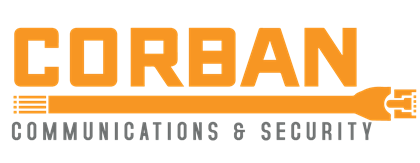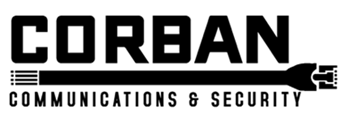Comprehensive Security Assessment Tips
Embarking on a security assessment journey can uncover the hidden risks within your organizational structure and shield against potential threats.
The pivotal role of such assessments is emphasized by the ever-evolving landscape of cyber threats, necessitating pro-active high-caliber assessments - the kind that empower your teams to stay ahead of cyber adversaries.
Understanding Security Assessment
A security assessment is an essential evaluation of an organization's vulnerabilities and risks to identify necessary protective measures.
It requires astute strategizing to ensure robust defense mechanisms against cyber threats.
This process entails scrutinizing various facets of your enterprise’s technology and processes to form a baseline of strengths and weaknesses, employing methodologies that evolve and adapt to emerging threats and contemporary challenges.
An effective security assessment not only uncovers existing vulnerabilities but also propels a proactive approach to thwart potential future breaches, offering a comprehensive framework to fortify your organizational fortitude. By embracing this proactive stance, organizations can "future-proof" their security and uphold a resilient posture.
cURL error 28: Operation timed out after 60002 milliseconds with 0 bytes received (see https://curl.haxx.se/libcurl/c/libcurl-errors.html) for https://api.openai.com/v1/chat/completions
Identifying Potential Threats
In the vast landscape of cybersecurity, a security assessment begins with an expansive review of potential threats that could compromise your organization. By diligently mapping out internal and external factors, organizations cultivate a robust understanding of possible attack vectors. Harnessing advanced analytics and fostering a culture of awareness empowers you to predict and mitigate these threats effectively, ensuring preparedness against a dynamic threat ecosystem.
External Threats
External threats are a critical focus in security assessments, demanding an arsenal of innovative defense strategies. Consistently monitoring these risks is vital to safeguarding organizational assets.
To address these pervasive threats, organizations must adopt a "zero-trust model." This involves enforcing strict identity verification, reducing the risk of unauthorized access from outside sources.
External threats account for 59% of data breaches, necessitating robust defense mechanisms and vigilant monitoring.
Embracing new technologies that enhance visibility into threats is fundamental. By leveraging threat intelligence platforms, organizations can anticipate shifts in attacker strategies, adjusting defenses proactively. This strategic foresight enables companies to stay ahead of adversaries in the ever-evolving cybersecurity landscape.
Internal Threats
Internal threats often arise from within, presenting unique challenges that require astute attention and proactive measures to mitigate potential risks.
These threats can stem from employees accessing sensitive data without proper authorization, either unintentionally or with malicious intent. To combat such risks, organizations should establish comprehensive security policies and continuous education for staff to reinforce the significance of safeguarding proprietary information. Regular audits and the implementation of strict access controls can help prevent the mishandling of critical data.
Proactively, firms should cultivate a culture of transparency and accountability. By fostering an environment where employees feel valued and informed, the likelihood of intentional internal breaches is significantly reduced, thus creating a more resilient infrastructure.
Furthermore, developing robust internal monitoring systems aids in identifying unusual activities swiftly. These proactive measures not only protect organizations from potential threats but also bolster confidence among stakeholders. Emphasizing constructive feedback and nurturing a positive organizational culture can transform potential vulnerabilities into strengths that contribute to a more secure and unified enterprise.
Conducting a Risk Assessment
Navigating the landscape of security demands a dynamic approach. Conducting a risk assessment serves as a pivotal component in fortifying an organization's defenses against unpredictable threats.
This procedure involves identifying potential threats to the organization’s assets.
In-depth, comprehensive evaluations ensure that all potential vulnerabilities are recognized and prioritized accordingly.
Utilizing these insights, organizations can then strategize effectively, implementing safeguards that directly address identified risks.
Conducting a thorough risk assessment not only anticipates future challenges, but it also actively engages teams in a shared mission of vigilance and preparation. This proactive stance empowers organizations to prioritize resources and capabilities, thereby increasing resilience against potential security incidents.
Ultimately, the art of risk assessment is an ongoing commitment to security's evolving dance. It calls for a proactive mindset that enables organizations to constantly adapt and thrive amid changing environments.
Reviewing Security Policies
In the world of cybersecurity, reviewing security policies is more than a routine task; it is a cornerstone of sustainable safeguarding of organizational assets, and thus demands a cycle of engagement, evaluation, and renewal.
Thoroughly reassessing policies equips organizations with robust contingency plans.
Reviewing these policies periodically ensures that existing security architectures are adept at fending off a myriad of challenges, from the mundane to the unforeseen, providing a bulwark that is as dynamic as it is robust.
By regularly revisiting the core tenets of your security policies, you embrace a culture of continuous improvement that is key to fortifying defenses. This practice not only entails adapting to technological advancements but also fostering a landscape of compliance and governance excellence. This concerted effort cultivates an environment where "preparedness" becomes synonymous with daily operations, pushing the envelope of what is achievable in organizational resilience.
Testing Security Controls
Testing security controls is the bedrock of maintaining resilient defense mechanisms. By evaluating, refining, and validating the efficiency of security controls, organizations can proactively defend against threats.
Employ comprehensive test plans to verify control effectiveness in real-world scenarios.
Robust testing methodologies such as penetration tests and red teaming (simulated attack exercises) can uncover vulnerabilities.
Security controls must be tested holistically, assessing both technical and human elements, ensuring that safeguards function under pressure.
The insights gained from testing allow for recalibration and reinforcement, transforming areas of weakness into strongholds by implementing tailored strategies for mitigating identified risks.
Ultimately, the goal of testing security controls is to achieve a state of preparedness. Well-validated controls are the backbone of an agile cybersecurity posture.
Vulnerability Scanning Techniques
Vulnerability scanning stands as an essential preemptive measure to identify and mitigate security flaws timely, thus fortifying organizations' resilience and operational integrity.
By employing sophisticated scanning techniques, organizations can methodically dissect their digital infrastructure (networks and applications) to pinpoint existing vulnerabilities, enabling them to implement robust corrective actions and elevate their security posture proactively.
Terms like “authenticated” and “unauthenticated” scans are instrumental in assessing the depth of the 'attack surface'.
Automated Tools
Harnessing the power of automated tools can drastically enhance the efficiency and comprehensiveness of a security assessment.
- Network Scanners: Essential for detecting open ports and potential vulnerabilities across devices linked to the network.
- Vulnerability Management Systems: These tools provide continuous monitoring and prioritization of potential security threats.
- Web Application Scanners: Designed specifically to identify configuration errors and vulnerabilities in web applications.
- Configuration Management Tools: They ensure that systems are configured according to best practices and organizational policies.
- Intrusion Detection Systems (IDS): Automated monitoring for suspicious activity within network traffic, crucial for preemptive threat management.
Incorporating these tools into your security strategy can lead to more precise and actionable insights.
While automated tools are indispensable, they should complement rather than replace human expertise and judgment.
Manual Vulnerability Testing
In the realm of cybersecurity, manual vulnerability testing remains a cornerstone of comprehensive evaluations. Despite the efficiency of automated tools, there is no substitute for the nuanced insights that manual testing provides.
It leverages human intuition and adaptability to uncover subtle issues.
This aspect of security assessment is vital in identifying unique vulnerabilities that may be overlooked by automated systems. Manual testers can apply their skillset to think like an attacker, probing for weaknesses with creativity and precision.
Moreover, manual vulnerability testing allows for a deeper understanding of the security landscape, offering a powerful complement to automated processes. Through this hands-on approach, testers can "walk" through applications as an intruder might, identifying vulnerabilities beyond the capabilities of scripts and algorithms. Ultimately, this method ensures a robust defense mechanism against evolving threats.
Analyzing Assessment Results
Harnessing insights from results enhances future protection.
After conducting a security assessment, the next critical step is analysis. This phase involves sifting through the findings to identify patterns, vulnerabilities, and key areas for improvement, empowering organizations to take proactive measures for safeguarding assets. Effectively, this is the art of transforming raw data into actionable intelligence that enhances security posture.
Analyzing results requires attention and precision.
The process begins with categorizing vulnerabilities by risk level—an essential strategy in focusing mitigation efforts where they matter most and preserving resources efficiently. By strategically prioritizing these findings, organizations can implement scalable solutions that bolster long-term security.
This meticulous evaluation journey sets the stage for continuous improvement, equipping organizations with foresight to navigate 2023 and beyond. In this dynamic digital era, leveraging insights from assessments ensures organizations aren't merely reacting but are strategically advancing towards stronger defenses, maintaining resilience amidst an ever-changing threat landscape.
Implementing Security Improvements
Adopting security improvements marks the evolution from vulnerability assessment to fortified resilience.
In 2023, organizations striving for excellence in security stand at a pivotal juncture. With vulnerabilities identified and prioritized through meticulous assessments, they are now empowered to transform potential liabilities into strengths. This process fuels a proactive security paradigm, tailored to navigate both current and emerging threats.
It is essential, therefore, that one’s focus extends beyond mere patching of existing weaknesses. True security enhancements are achieved through an integrated strategy that imbues the entire organizational framework with robust safeguards. This involves fostering a security-conscious culture, where every stakeholder is aligned towards common protective goals.
Harnessing the momentum of innovation and technology, leaders can deploy advanced solutions such as AI-powered threat detection or automated response systems. These not only bolster defenses but also enhance the agility of the organization, reinforcing its capacity to adapt and thrive in the face of adversity.
Consistently evaluating and iterating on improvements assures continued relevance and effectiveness.
Ongoing Security Monitoring
Security is not a one-time event; it demands perpetual vigilance and adaptation. Continuous monitoring will enable teams to promptly identify and neutralize threats, ensuring peace of mind and operational resilience.
Leveraging automated systems offers real-time insights, allowing precise responses with minimal delay.
Integrating ongoing monitoring is tantamount to nurturing a dynamic defense system that operates as a living entity, continuously evolving its capabilities through data analysis, predictive modeling, and the application of the latest technological advancements.
By adopting these practices, organizations affirm their commitment to a secure future: a future where risks are not only mitigated but anticipated. This proactive approach transforms security from a reactive exercise to a definitive cornerstone of success and innovation. Emphasizing "security by design" ensures that safety is fundamentally woven into the organizational fabric.
Documenting Assessment Findings
Documenting assessment findings is the linchpin of any security assessment, bridging the gap between analysis and action.
These documented findings provide a comprehensive understanding of the security landscape, identifying both strengths and vulnerabilities. By diligently recording each aspect, organizations gain invaluable insights into areas that require attention and improvement.
An effective documentation process is not merely about listing vulnerabilities but also about offering a clear path forward through actionable recommendations. A well-crafted report synthesizes complex data into accessible information, empowering stakeholders to implement necessary changes swiftly and efficiently.
The clarity and detail of the documentation significantly affect the strategic decisions that follow, ensuring solutions are both informed and impactful. This rigor in documentation paves the way for continuous improvement and a fortified security posture.
Remember, thorough documentation transforms findings into a catalyst for enhanced security and resilience.


